Exercising with a face mask: Do it right with these 5 tips
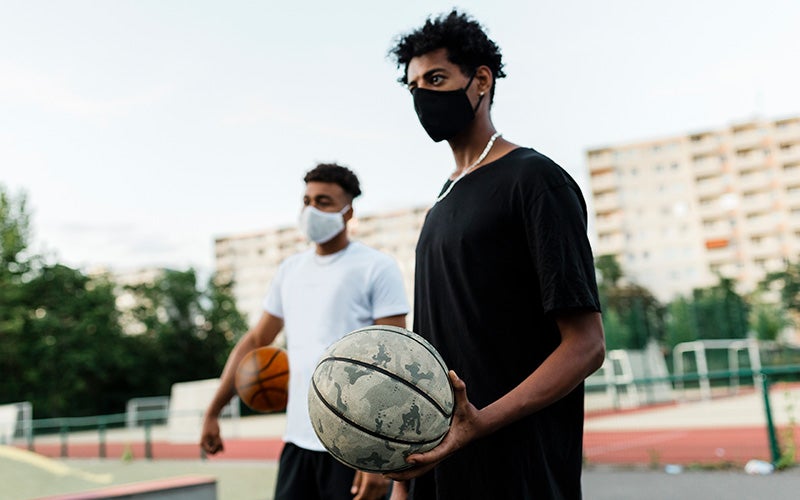 '@Willie B. Thomas
'@Willie B. Thomas
To protect against coronavirus and Covid-19, masks are mandatory in many places. Exercising with a face mask isn’t mandatory everywhere, but out of consideration many athletes wear a mask during their workouts. But you don’t need to overhaul your whole workout routine. Find out more about the 5 most common mistakes you should avoid. Stay safe and stay healthy!
Editor’s Note: Public health regulations regarding the coronavirus can change very often and with little notice. Please check the current local recommendations for your area in case they differ from our advice below.
Where is it compulsory to wear a mask during exercise?
Distancing rules, hygiene regulations, compulsory face masks: as we’re all painfully aware, the coronavirus pandemic has changed our everyday lives for months. Some of us were feeling overjoyed to be able to get back into the gym, mask or not. Whether you need to wear a mask during your workout can vary from place to place. Please look for more specific regulations from your own area.
Even if mouth and nose protection is not mandatory in your area, it’s considerate to others if you wear a mask while you exercise to prevent the spread of coronavirus. You are required to wear a cloth face mask wherever social distancing is difficult or whenever you’re indoors in rooms without sufficient ventilation.
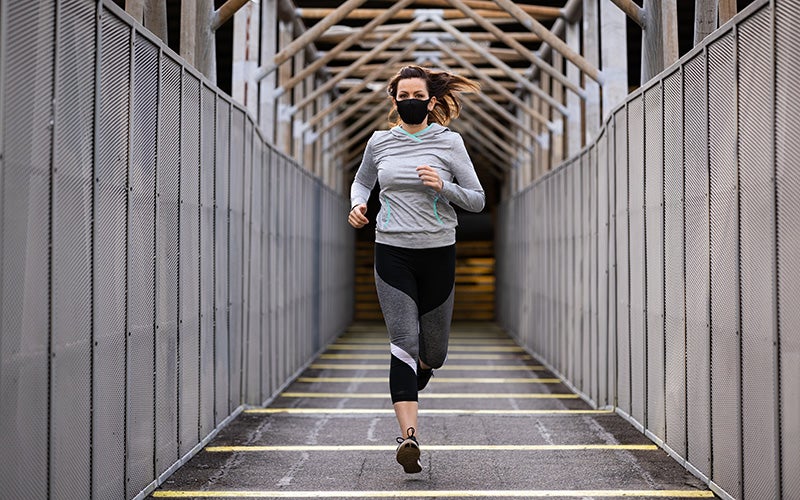
When you’re doing a solo workout in the fresh air, on the other hand, you can usually do without a mask. Infection via aerosol particles outdoors is unlikely, as long as you’re keeping a minimum distance of six feet. According to a recent study, this distance is a must during a workout, as the movements of your workout can stir up the aerosols you exhale, keeping them in the air for longer.1
Working out while wearing a mask isn’t dangerous, but make sure you avoid the following mistakes:
Mistake 1: You’re training too hard
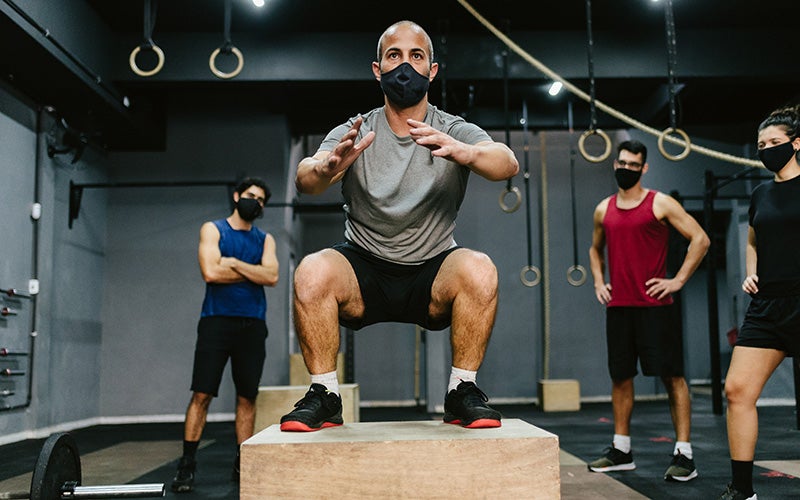
Wearing a face mask while exercising does make breathing a little more difficult over a longer period. The fabric covers the mouth and nose, so every inhalation comes against a bit more resistance. It might be harder to find that energy on your last set or the final minutes of a workout.
So, when working out with a mask on, you should reduce your exercise intensity a bit, so you’re not pushing to your usual limit. And make a point of starting slowly each time, especially if you are new to training with a mask.
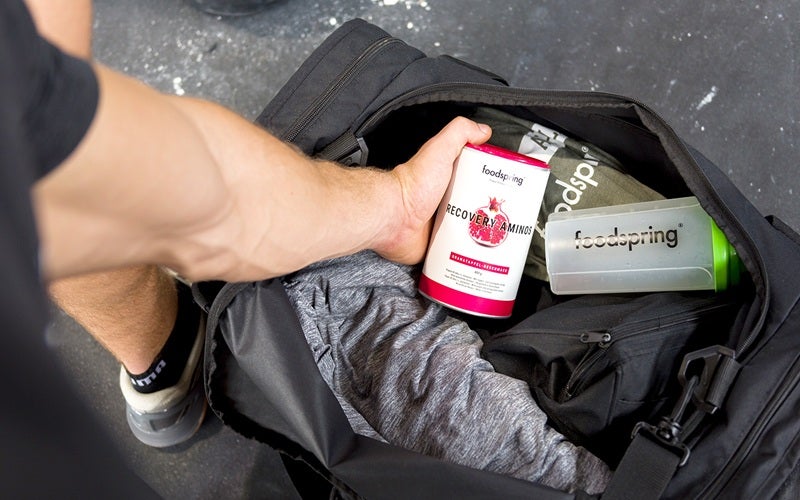
©foodspringTip: Since you usually sweat more when exercising with a mask, be sure to hydrate sufficiently afterwards. Your body needs to regain important nutrients that it loses through sweat. Our Recovery Aminos give just the right support.
Mistake 2: Your mask is too thick
The lighter and thinner the mask, the less you’ll feel restricted, so soft fabric or disposable masks are the best choice for sports. FFP masks with a breathing valve are less appropriate. While they are considered to be the best protection against infection, they make breathing more difficult than standard fabric masks. We strongly advise against using them, especially for more intensive training. But do make sure that the material on your fabric mask has a tight weave.
Mistake 3: Your mask doesn’t fit well
When working out, you’re in motion almost all the time, much more so than when you’re sitting in one place. If your mask isn’t tight enough and slips, you’ll constantly be touching your face to fix it, which increases your risk of infection. Whether running, yoga, or weight training – make sure that your mask fits perfectly when you exercise with one.

Mistake 4: You aren’t bringing a spare mask with you
A humid environment is the ideal breeding ground for germs. If your mask is sweaty, it no longer offers protection – from coronavirus or any other germ. Damp masks are a breeding ground for all kinds of pathogens that might affect your health. If you bring a second mask, you’ll always have a backup on hand.
After exercising, cloth masks should be washed at 60 degrees Celsius and dried well before using them again. Disposable masks, as the name suggests, are intended for single use. Detach the straps, then throw them directly into the trash after your workout.
Mistake 5: Thinking the mask increases the effectiveness of the workout
Breathing with a mask on is (subjectively) more difficult, as the fabric provides an unfamiliar resistance. However, it’s not true that the fabric blocks air circulation. Your lungs are getting sufficient oxygen even through the face mask, and carbon dioxide can leave them just as reliably. Don’t fall into the mistaken belief that wearing a face mask is as intensive of a kick as a high-altitude workout.
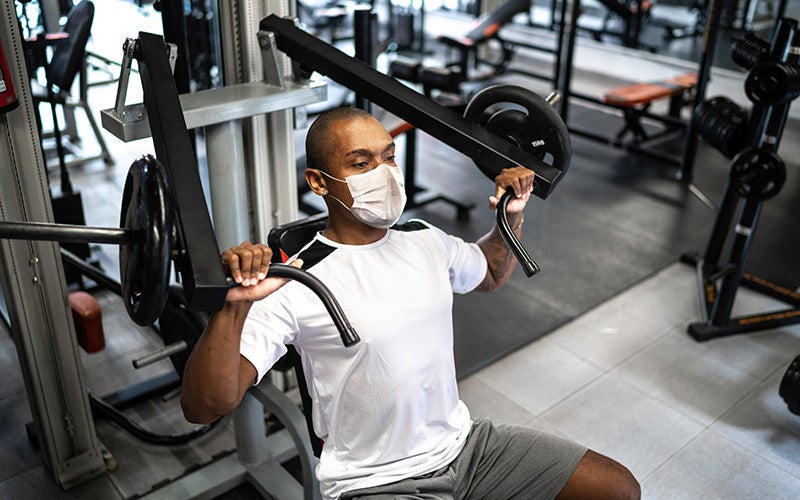
Summary
- Exercising while wearing a mask is useful in times of corona when you can’t keep the distance rules or the premises are not sufficiently ventilated.
- Breathing with a mask can be more difficult because of the pressure on your nose and mouth, so reduce your workout intensity as needed in order not to overload your body.
- The lighter and thinner the fabric, the more suitable the mask is for training.
- The mask should fit snugly against your face during exercise and not slip.
- Damp masks no longer serve their purpose: always carry a spare mask with you in case your original gets sweaty.
- A standard face covering is not intended to imitate altitude training.
Sources for this article
We at foodspring use only high-quality sources, including peer-reviewed studies, to support the facts within our articles. Read our editorial policy to learn more about how we fact-check and keep our content accurate, reliable, and trustworthy.
- http://www.urbanphysics.net/Social%20Distancing%20v20_White_Paper.pdf






















